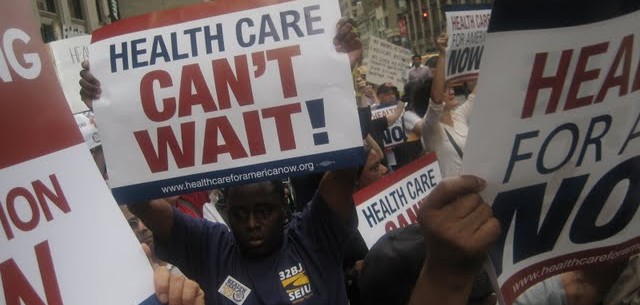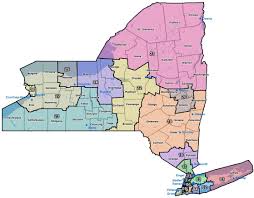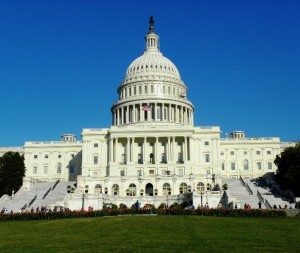In just over one week earlier this month, congressional leaders unveiled and approved budget resolutions for the upcoming 2016 Fiscal Year that starts on October 1st. They each embody an overall austerity approach to spending (except for defense), and revenue proposals that create no new income and cut taxes further for upper-income people and large corporations. They also put “entitlement programs” squarely in the bullseye: Medicare, Medicaid, SNAP/Food Stamps, and (indirectly) Social Security. Overall analyses of the House and Senate budget resolutions by the Center on Budget and Policy Priorities reveal the ugly details.
Health care is always a very significant portion of the federal budget, and both the House and Senate resolutions propose large funding cuts and/or structural changes to health care programs. What’s in their resolutions has raised much concern among health care advocates, particularly about the future of Medicare, Medicaid, the Children’s Health Insurance Program (CHIP), and the Affordable Care Act (ACA.)
First, a bit on the larger context:
As many politicians proclaim, budgets are indeed the financial embodiments of our shared values as a society and nation. Every budget has two parts: a) what we spend money on, how, how much, and why (spending policy); and b) where and who we get the money from to pay for all our spending, how we raise it, how much, and why (tax policy.) When one looks at the federal spending in particular, there are a couple of additional ways to “slice-and-dice” it: mandatory vs. discretionary, and defense vs. non-defense. The major federal health care programs are all mandatory: Medicare, Medicaid, CHIP, and the most of the ACA. That means that however many people may qualify for a given program, the government is required to provide the necessary funding, whatever it may be.
As for the budget process, it all starts in early February with the President putting out a proposal. That is followed by congressional hearings where administration officials answer questions on it. In mid-late March, congressional leaders put out their own proposals (which may or may not align with the President’s), and each chamber passes its own resolution. By mid-late April, they try to agree on a joint resolution, and each adopt it. It does not go to the President for signature. It is just a blueprint to guide the subsequent detailed appropriations process that then occurs over the course of the late spring, summer, and early fall.
In total, 12 appropriations bills (each covering related groups of funding – one of them for health and human services) are (supposed to be) passed before by October 1st when the new fiscal year begins. These bills are negotiated with the President and require his/her agreement and signature. In addition, Congress has the option each year to invoke “reconciliation instructions” for certain appropriations bills so as to use the budget process to enact broader policy goals while foregoing the Senate’s 60-vote “cloture” process, in order to move such bills forward on a simple majority vote. The ACA was enacted in early 2010 per reconciliation instructions adopted in 2009.
As for health care provisions in this year’s Congressional budget resolutions (based on an analysis by the National Priorities Project):
Medicare:
- President Obama proposes to save $430M over 10 years by a) raising Part B and D premiums for wealthy beneficiaries, b) requiring co-payments for home health care, and c) negotiating lower prices for certain high-price specialty drugs
- The House Resolution raises Part B and D premiums for wealthy beneficiaries, and privatizes Medicare for beneficiaries who become eligible starting in 2025 by providing them vouchers to purchase private insurance.
- The Senate Resolution generates $430M over 10 years but does not specify how, instead leaving it up to the appropriations process to figure that out.
Medicaid and CHIP:
- President Obama proposes no major changes to either program, and renews CHIP funding for another 4 years.
- The House Resolution proposes to a) repeal the expansions made under the ACA, b) combine with CHIP, c) block grant them, and d) reduce the combined spending by nearly $1 trillion over 10 years.
- The Senate Resolution proposes to a) repeal the expansions made under the ACA, b) combines Medicaid with other mandatory domestic spending programs (CHIP, SNAP/Food Stamps), and c) cuts them in total by $4.3 trillion over 10 years, but does not specify how.
Affordable Care Act:
- President Obama proposes to no major changes.
- The House Resolution repeals the law, and invokes the reconciliation process.
- The Senate Resolution repeals the law, and invokes the reconciliation process.
Meanwhile, many health advocates look to the Congressional Progressive Caucus’ “People’s Budget” as a preferred alternative. Among its health care provisions are:
- Repeals the excise “cadillac” tax on top-quality employer-sponsored health plans
- Creates a “public health insurance option” to be offered on the new health benefit exchange marketplaces
- Directs Medicare to negotiate drug prices with manufacturers
- Closes some Medicare tax loopholes
- Continues funding for the State Child Health Insurance Program (CHIP) for 4 years
- Expedites approvals of state single-payer programs
When Congress returns to session in mid-April, leaders will strive to work out the differences between the House and Senate resolutions, and then proceed to the appropriations bill process to culminate by late September. Those bills will have to be negotiated with and signed by the President by October 1st when the government’s new fiscal year begins.
What’s happening here in New York:
Since the debt ceiling fight in the summer of 2011, health care advocates have joined forces with other social justice advocates and labor unions in the statewide “Restore the American Promise” (RAP) campaign. It is based on the premise that by joining forces, various issue advocates have more strength and effectiveness, vs. operating solely in their own silos. Collectively, RAP focuses on issues of:
- Protecting and improving health care and social programs
- Fostering economic growth (vs. imposing budget austerity)
- Restoring tax fairness (vs. preserving and expanding special tax breaks and loopholes)
- Prioritizing job creation and income security
- Ending wasteful military spending
RAP holds bi-weekly conference calls, and conducts its work through local coalitions in politically strategic regions of the state. It undertakes simultaneous, coordinated actions raising up particular priority issues at a given moment in time, depending on what’s happening in Washington. Activities include urging Congressmembers to “do the right thing”, holding them accountable for their positions and votes, educating the public on key issues, and engaging local media.
Here in New York City, the RAP affiliate coalition is known as the “No Bad Grand Bargain” (NBGB) network, founded in 2012. NBGB has focused on working with members of the NYC congressional delegation who are members of the Progressive Caucus, shoring up centrist politicians to fight for the needs of everyday New Yorkers, and working with local groups in the 11th Congressional District, which covers Staten Island and a part of South Brooklyn, because it is often a swing district.









